前言
觉得文章有帮助的话,麻烦随手留下点赞收藏吧,关注小冷看更多干货学习文章
★ 这里是小冷的博客
? 优质技术好文见专栏
个人公众号,分享一些技术上的文章,以及遇到的坑
当前系列:数据结构系列
源代码 git 仓库
数据结构代码地址 代码Git 仓库地址
目录
二叉树简介
为什么需要树这种数据结构 ?
二叉树的概念
-
树有很多种,每个节点最多只能有两个子节点的一种形式称为二叉树。
-
二叉树的子节点分为左节点和右节点
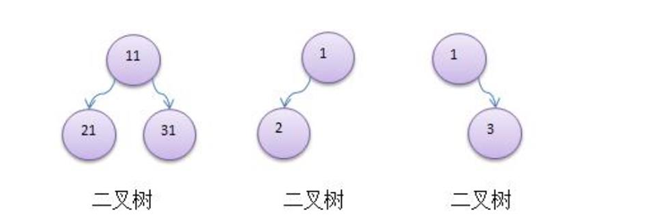
-
如果该二叉树的所有叶子节点都在最后一层,并且结点总数= 2^n -1 , n 为层数,则我们称为满二叉树。
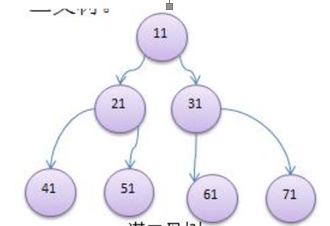
-
如果该二叉树的所有叶子节点都在最后一层或者倒数第二层,而且最后一层的叶子节点在左边连续,倒数二
层的叶子节点在右边连续,我们称为完全二叉树
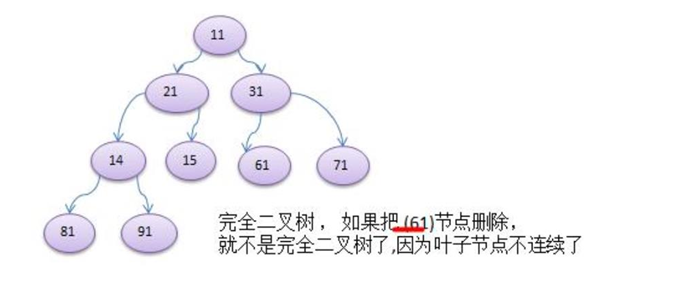
数组
数组存储方式的分析
优点:通过下标方式访问元素,速度快。对于有序数组,还可使用二分查找提高检索速度。 缺点:如果要检索具体某个值,或者插入值(按一定顺序)会整体移动,效率较低
画出操作示意图:

链表
链式存储方式的分析
优点:在一定程度上对数组存储方式有优化(比如:插入一个数值节点,只需要将插入节点,链接到链表中即可,
删除效率也很好)。
缺点:在进行检索时,效率仍然较低,比如(检索某个值,需要从头节点开始遍历)
操作示意图:

二叉树
树存储方式的分析
能提高数据存储,读取的效率, 比如利用 二叉排序树(Binary Sort Tree),既可以保证数据的检索速度,同时也
可以保证数据的插入,删除,修改的速度
案例: [7, 3, 10, 1, 5, 9, 12]
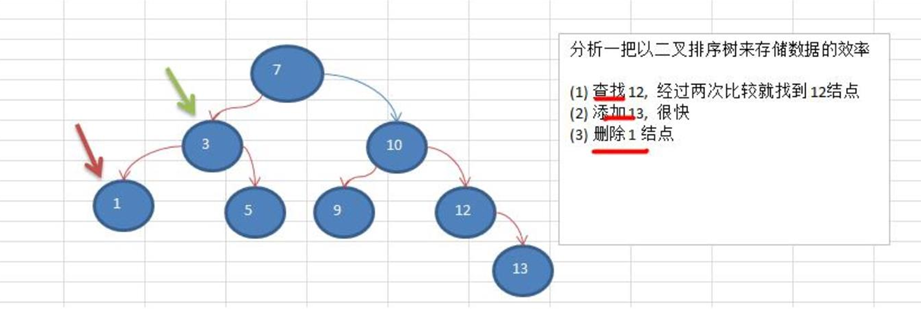
认识树结构
树的常用术语(结合示意图理解:
1) 节点
2) 根节点
3) 父节点
4) 子节点
5) 叶子节点 (没有子节点的节点) 6) 节点的权(节点值) 7) 路径(从 root 节点找到该节点的路线) 8) 层
6) 子树
7) 树的高度(最大层数)
- 森林 :多颗子树构成森林
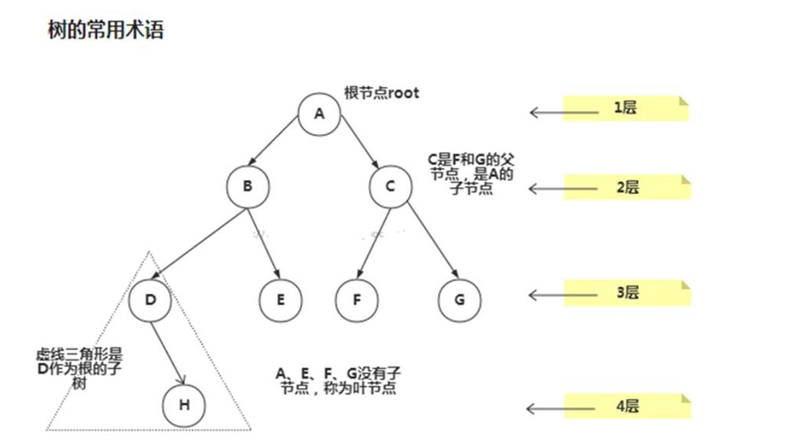
二叉树遍历的说明
- 前序遍历: 先输出父节点,再遍历左子树和右子树
- 中序遍历: 先遍历左子树,再输出父节点,再遍历右子树
- 后序遍历: 先遍历左子树,再遍历右子树,最后输出父节点
- 小结: 看输出父节点的顺序,就确定是前序,中序还是后序
二叉树遍历应用实例(前序,中序,后序)

二叉树遍历代码实例
public static void main(String[] args){
// 测试,先创建一颗二叉树
BinaryTree binaryTree = new BinaryTree();
heroNode root = new heroNode(1, "宋江");
heroNode node1 = new heroNode(2, "吴用");
heroNode node2 = new heroNode(3, "卢俊义");
heroNode node3 = new heroNode(4, "林冲");
heroNode node4 = new heroNode(5, "关胜");
//设置头节点
binaryTree.setHead(root);
// 此处我们手动的填补二叉树,之后还会有递归的方式填充二叉树
root.setLeftNode(node1);
root.setRightNode(node2);
node2.setRightNode(node3);
node2.setLeftNode(node4);
//测试
前序遍历
//binaryTree.PreOrder();
中序遍历
//System.out.println();
//binaryTree.InfixOrder();
后序遍历
//System.out.println();
//binaryTree.PostOrder();
}
class BinaryTree {
//确定根节点
private heroNode head;
public void setHead(heroNode head) {
this.head = head;
}
// 前序遍历
public void PreOrder() {
if (this.head != null) {
this.head.PreOrder();
} else {
System.out.println("二叉树没有根节点,无法遍历");
}
}
//中序遍历
public void InfixOrder() {
if (this.head != null) {
this.head.infixOrder();
} else {
System.out.println("二叉树没有根节点,无法遍历");
}
}
//后续遍历
public void PostOrder() {
if (this.head != null) {
this.head.postOrder();
} else {
System.out.println("二叉树没有根节点,无法遍历");
}
}
}
class heroNode {
private int id;
private String name;
private heroNode leftNode;
private heroNode rightNode;
public heroNode getLeftNode() {
return leftNode;
}
public void setLeftNode(heroNode leftNode) {
this.leftNode = leftNode;
}
public heroNode getRightNode() {
return rightNode;
}
public void setRightNode(heroNode rightNode) {
this.rightNode = rightNode;
}
public heroNode(int id, String name) {
this.id = id;
this.name = name;
}
public int getId() {
return id;
}
public void setId(int id) {
this.id = id;
}
public String getName() {
return name;
}
@Override
public String toString() {
return "heroNode{" +
"id=" + id +
", name='" + name + '\'' +
'}';
}
public void setName(String name) {
this.name = name;
}
// 前序遍历
public void PreOrder() {
System.out.println(this);
if (this.getLeftNode() != null) {
this.leftNode.PreOrder();
}
if (this.getRightNode() != null) {
this.rightNode.PreOrder();
}
}
// 中序遍历
public void infixOrder() {
if (this.leftNode != null) {
this.leftNode.infixOrder();
}
System.out.println(this);
if (this.rightNode != null) {
this.rightNode.infixOrder();
}
}
// 后序遍历
public void postOrder() {
if (this.leftNode != null) {
this.leftNode.postOrder();
}
if (this.rightNode != null) {
this.rightNode.postOrder();
}
System.out.println(this);
}
}
二叉树查找思路
- 请编写前序查找,中序查找和后序查找的方法。
- 并分别使用三种查找方式,查找 heroNO = 5 的节点
- 并分析各种查找方式,分别比较了多少次
思路图解
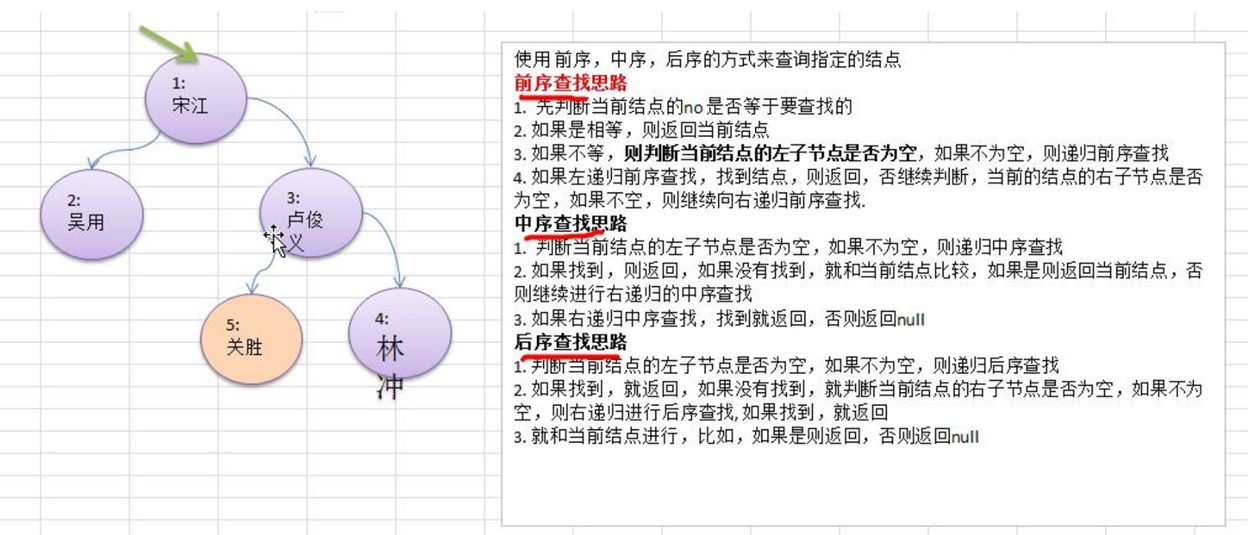
二叉树查找代码示例
为了方便更好的阅读代码,就把节点和树类的查找代码专门的写出来,后面会有全代码的部分
class BinatyTree{
//前序查找
public heroNode preOrderSearch(int no) {
if (this.head != null) {
return this.head.PreOrderSearch(no);
} else {
return null;
}
}
//中序查找
public heroNode infixOrderSearch(int no) {
if (this.head != null) {
return this.head.infixOrderSearch(no);
} else {
return null;
}
}
//后序查找
public heroNode postOrderSearch(int no) {
if (this.head != null) {
return this.head.postOrderSearch(no);
} else {
return null;
}
}
}
class heroNode{
//前序查找
public heroNode preOrderSearch(int no) {
if (this.head != null) {
return this.head.PreOrderSearch(no);
} else {
return null;
}
}
//中序查找
public heroNode infixOrderSearch(int no) {
if (this.head != null) {
return this.head.infixOrderSearch(no);
} else {
return null;
}
}
//后序查找
public heroNode postOrderSearch(int no) {
if (this.head != null) {
return this.head.postOrderSearch(no);
} else {
return null;
}
}
}
二叉树-删除节点
- 如果删除的节点是叶子节点,则删除该节点
- 如果删除的节点是非叶子节点,则删除该子树.
- 测试,删除掉 5 号叶子节点 和 3 号子树.
思路分析
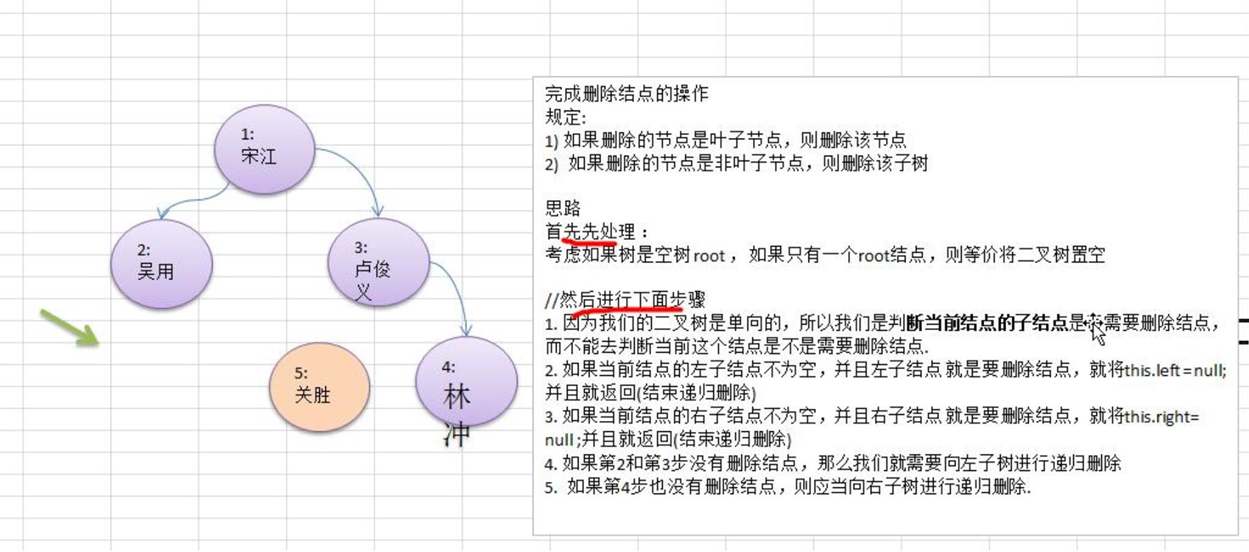
有关二叉树的,遍历,查找,删除的全代码
package com.hyc.DataStructure.tree;
/**
* @projectName: DataStructure
* @package: com.hyc.DataStructure.tree
* @className: BinaryTreeDemo
* @author: 冷环渊 doomwatcher
* @description: TODO
* @date: 2022/2/3 16:47
* @version: 1.0
*/
public class BinaryTreeDemo {
public static void main(String[] args) {
// 测试,先创建一颗二叉树
BinaryTree binaryTree = new BinaryTree();
heroNode root = new heroNode(1, "宋江");
heroNode node1 = new heroNode(2, "吴用");
heroNode node2 = new heroNode(3, "卢俊义");
heroNode node3 = new heroNode(4, "林冲");
heroNode node4 = new heroNode(5, "关胜");
//设置头节点
binaryTree.setHead(root);
// 此处我们手动的填补二叉树,之后还会有递归的方式填充二叉树
root.setLeftNode(node1);
root.setRightNode(node2);
node2.setRightNode(node3);
node2.setLeftNode(node4);
//测试
前序遍历
//binaryTree.PreOrder();
中序遍历
//System.out.println();
//binaryTree.InfixOrder();
后序遍历
//System.out.println();
//binaryTree.PostOrder();
//System.out.println("前中后查找");
//System.out.println("开始前序查找");
//heroNode resNode = binaryTree.preOrderSearch(5);
//if (resNode != null) {
// System.out.printf("找到节点为 no =>%d,名字 name => %s ", resNode.getId(), resNode.getName());
//} else {
// System.out.println("查找失败");
//}
//System.out.println("开始中序查找");
//heroNode resNode = binaryTree.infixOrderSearch(5);
//if (resNode != null) {
// System.out.printf("找到节点为 no =>%d,名字 name => %s ", resNode.getId(), resNode.getName());
//} else {
// System.out.println("查找失败");
//}
//System.out.println("开始后序查找");
//heroNode resNode = binaryTree.postOrderSearch(5);
//if (resNode != null) {
// System.out.printf("找到节点为 no =>%d,名字 name => %s ", resNode.getId(), resNode.getName());
//} else {
// System.out.println("查找失败");
//}
// 删除测试
System.out.println("删除前");
binaryTree.PreOrder();
System.out.println("删除后");
binaryTree.deleteNode(5);
binaryTree.PreOrder();
}
}
class BinaryTree {
//确定根节点
private heroNode head;
public void setHead(heroNode head) {
this.head = head;
}
// 前序遍历
public void PreOrder() {
if (this.head != null) {
this.head.PreOrder();
} else {
System.out.println("二叉树没有根节点,无法遍历");
}
}
//中序遍历
public void InfixOrder() {
if (this.head != null) {
this.head.infixOrder();
} else {
System.out.println("二叉树没有根节点,无法遍历");
}
}
//后续遍历
public void PostOrder() {
if (this.head != null) {
this.head.postOrder();
} else {
System.out.println("二叉树没有根节点,无法遍历");
}
}
//前序查找
public heroNode preOrderSearch(int no) {
if (this.head != null) {
return this.head.PreOrderSearch(no);
} else {
return null;
}
}
//中序查找
public heroNode infixOrderSearch(int no) {
if (this.head != null) {
return this.head.infixOrderSearch(no);
} else {
return null;
}
}
//后序查找
public heroNode postOrderSearch(int no) {
if (this.head != null) {
return this.head.postOrderSearch(no);
} else {
return null;
}
}
// 删除节点
public void deleteNode(int no) {
if (head != null) {
if (head.getId() == no) {
head = null;
return;
} else {
head.deleteNode(no);
}
} else {
System.out.println("空树,无法删除");
}
}
}
class heroNode {
private int id;
private String name;
private heroNode leftNode;
private heroNode rightNode;
public heroNode getLeftNode() {
return leftNode;
}
public void setLeftNode(heroNode leftNode) {
this.leftNode = leftNode;
}
public heroNode getRightNode() {
return rightNode;
}
public void setRightNode(heroNode rightNode) {
this.rightNode = rightNode;
}
public heroNode(int id, String name) {
this.id = id;
this.name = name;
}
public int getId() {
return id;
}
public void setId(int id) {
this.id = id;
}
public String getName() {
return name;
}
@Override
public String toString() {
return "heroNode{" +
"id=" + id +
", name='" + name + '\'' +
'}';
}
public void setName(String name) {
this.name = name;
}
// 前序遍历
public void PreOrder() {
System.out.println(this);
if (this.getLeftNode() != null) {
this.leftNode.PreOrder();
}
if (this.getRightNode() != null) {
this.rightNode.PreOrder();
}
}
// 中序遍历
public void infixOrder() {
if (this.leftNode != null) {
this.leftNode.infixOrder();
}
System.out.println(this);
if (this.rightNode != null) {
this.rightNode.infixOrder();
}
}
// 后序遍历
public void postOrder() {
if (this.leftNode != null) {
this.leftNode.postOrder();
}
if (this.rightNode != null) {
this.rightNode.postOrder();
}
System.out.println(this);
}
// 前序查找
public heroNode PreOrderSearch(int no) {
System.out.println("前序查找");
//比较当前节点的no 是不是我们要搜索的
if (this.id == no) {
return this;
}
//要返回的节点
heroNode resNode = null;
// 判断左边节点是不是空 如果不是空的话 那么就递归前序查找
// 如果找到的话 就返回找到的节点
if (this.leftNode != null) {
resNode = this.leftNode.PreOrderSearch(no);
}
//如果不为null 那么代表左边找到了直接返回即可
if (resNode != null) {
return resNode;
}
// 判断右边节点是不是空 如果不是空的话 那么就递归前序查找
// 如果找到的话 就返回找到的节点
if (this.rightNode != null) {
resNode = this.rightNode.PreOrderSearch(no);
}
return resNode;
}
// 中序查找
public heroNode infixOrderSearch(int no) {
//要返回的节点
heroNode resNode = null;
// 判断左边节点是不是空 如果不是空的话 那么就递归中序查找
// 如果找到的话 就返回找到的节点
if (this.leftNode != null) {
resNode = this.leftNode.infixOrderSearch(no);
}
//如果不为null 那么代表左边找到了直接返回即可
if (resNode != null) {
return resNode;
}
//比较当前节点的no 是不是我们要搜索的
System.out.println("中序查找");
if (this.id == no) {
return this;
}
// 判断右边节点是不是空 如果不是空的话 那么就递归中序查找
// 如果找到的话 就返回找到的节点
if (this.rightNode != null) {
resNode = this.rightNode.infixOrderSearch(no);
}
return resNode;
}
// 后序查找
public heroNode postOrderSearch(int no) {
//要返回的节点
heroNode resNode = null;
// 判断左边节点是不是空 如果不是空的话 那么就递归后序查找
// 如果找到的话 就返回找到的节点
if (this.leftNode != null) {
resNode = this.leftNode.postOrderSearch(no);
}
//如果不为null 那么代表左边找到了直接返回即可
if (resNode != null) {
return resNode;
}
// 判断右边节点是不是空 如果不是空的话 那么就递归后序查找
// 如果找到的话 就返回找到的节点
if (this.rightNode != null) {
resNode = this.rightNode.postOrderSearch(no);
}
//如果不为null 那么代表右边找到了直接返回即可
if (resNode != null) {
return resNode;
}
System.out.println("后序查找");
//左右子树,都没有找到,那么就比较当前节点的no 是不是我们要搜索的
if (this.id == no) {
return this;
}
return resNode;
}
// 删除
public void deleteNode(int no) {
// 向左边遍历 如果左边子树有点话就将左边子树置空,如果不是就遍历右边
if (this.leftNode != null && this.leftNode.id == no) {
this.leftNode = null;
return;
}
// 向右边遍历 如果右边子树有点话就将左边子树置空,如果左右都没有那么就绪要递归的删除
if (this.rightNode != null && this.rightNode.id == no) {
this.rightNode = null;
return;
}
// 如果上面两步都不成功那么我们先向左边递归删除
if (this.leftNode != null) {
this.leftNode.deleteNode(no);
}
// 如果递归删除左子树也没有成功删除,那么就递归删除右边子树
if (this.rightNode != null) {
this.rightNode.deleteNode(no);
}
}
}